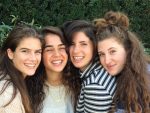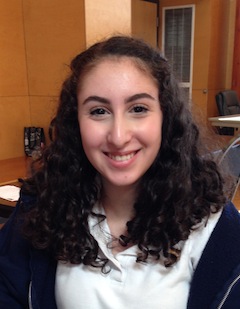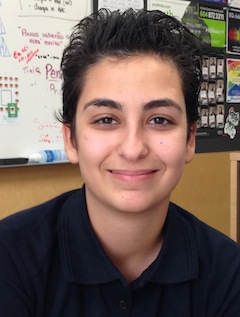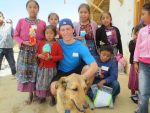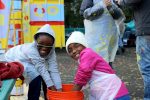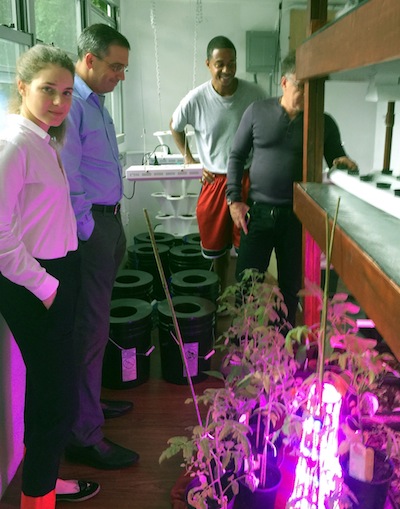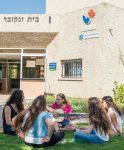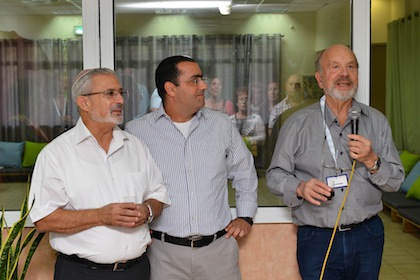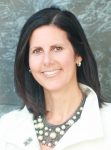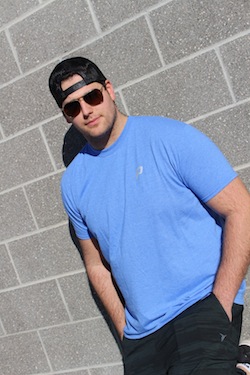Left to right are shinshiniot Yael Miller, Dana Salmon, Shahaf Shama and Danielle Favel. (photo by Michelle Dodek)
For the second year in a row, Jewish Federation of Greater Vancouver is providing our community with a burst of ahavat Yisrael, love for Israel. The shinshiniot – who are doing sh’nat sherut, community service, locally – are back. While there were three young women participating last year, this year’s enthusiastic group numbers four.
The shinshiniot program is part of Gesher Chai (Living Bridge), which Jewish federations across North America use to form person-to-person relationships between young Israelis and Diaspora youth. Based on the first run, Lissa Weinberger, manager of Jewish education and identity initiatives and the woman dealing primarily with this program, said, “We have changed a number of things this year based on our observations and experiences. It seems like putting the girls in pairs in their volunteer assignments is a really good idea.”
After a period of adjustment and integration into the community, the shinshiniot were paired off in mid-September. Danielle (Dani) Favel and Shahaf Shama work together during the weekdays in three community organizations: the Jewish Community Centre of Greater Vancouver, King David High School and Richmond Jewish Day School. Vancouver Talmud Torah takes up most of the time of the other two shinshiniot, Dana Salmon and Yael Miller.
On weekends, Beth Tikvah Congregation will have Shama, Salmon will help at Congregation Beth Israel and Miller and Favel will team up at Temple Sholom. Last summer, the shinshiniot divided between the region’s summer camps and the JCC’s Camp Shalom. Where they will be placed this summer has not yet been determined.
The shinshiniot bring with them experiences from their diverse family backgrounds and the different parts of Israel in which they live.
Salmon is from Ma’ale Adumim, a suburb of Jerusalem and has a family from Iran, Syria and Iraq. Shama’s family is also Mizrahi, with a little North African added; she grew up with her three siblings on Kibbutz HaZore’a near Haifa.
Miller and Favel are both of Ashkenazi descent, but with very different roots. Miller, who hails from Modi’in – the historical base of the Maccabees in the Chanukah story – was raised attending a Reform synagogue, a rarity in Israel. Favel’s parents both made aliyah because of their devotion to the Habonim Dror youth movement, one parent from Scotland and the other from Australia; she grew up on a small kibbutz called Kadarim with a view of the Kinneret.
The creativity and energy this group brings to their tasks are palpable. Although they are stationed in certain locations for the bulk of their volunteer work here, there will be community-wide events on which they will collaborate. Most notably, events around Lag b’Omer, Yom Hazikaron and Yom Ha’atzmaut. They also have individual passions they hope to be able to share with young people here.
“I would like to start some musical bands,” said Salmon. “I play the guitar and sing and would love to share Israeli music with people in Vancouver.”
Favel has musical aspirations as well. “I’ve been singing in a choir since I was 9,” she said. “I’d love to start a choir here that would sing Israeli songs.”
Miller has hopes of starting a teen pen-pal program, replacing the pens with computers, of course, while Shama hopes to marry her love of cooking and dressing up with her North African roots. “I want to bring [my experience of] the tradition of Mimuna to Vancouver,” said Shama. “The food, the traditional dress, the incredible celebration is something I would like to share.”
Not only do the shinshiniot share with the students and young people with whom they are volunteering, but also with the host families who welcome them into their homes. Shama started sharing her enthusiasm and talent for cooking immediately, said her “host mother,” Jennifer Shecter-Balin.
“This is our second time hosting a shinshinit and we really like it,” said Jackson Balin, 10. “You get a nice fun person from Israel living with you for three months. I like the culture and they teach you, you teach them.”
Balin said Shama makes Israeli salad for the family every evening and has made other delicious Israeli dishes as well.
Other ways in which the shinshiniot are contributing to our community are by providing Israeli dancing and cooking classes, and conversational Hebrew for youths who usually only get to speak Hebrew at home with their parents. The fact that they are recent high school graduates is a bonus for their ability to connect with local teens.
“Shinshiniot coming here enhances our experience, builds relationships and understanding for our kids, and it has an impact in our community and theirs back in Israel when they return,” said Federation chief executive officer Ezra Shanken.
Federation is still looking to fill some of the host family spots: if interested, contact Weinberger at [email protected] or 604-257-5104. For more information on the program or to contribute to Federation’s annual campaign, visit jewishvancouver.com.
Michelle Dodek is a Vancouver-based freelance writer whose 10-year-old son Max helped interview the shinshiniot. Having hosted one last year, he very much looks forward to hosting one soon.

